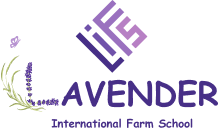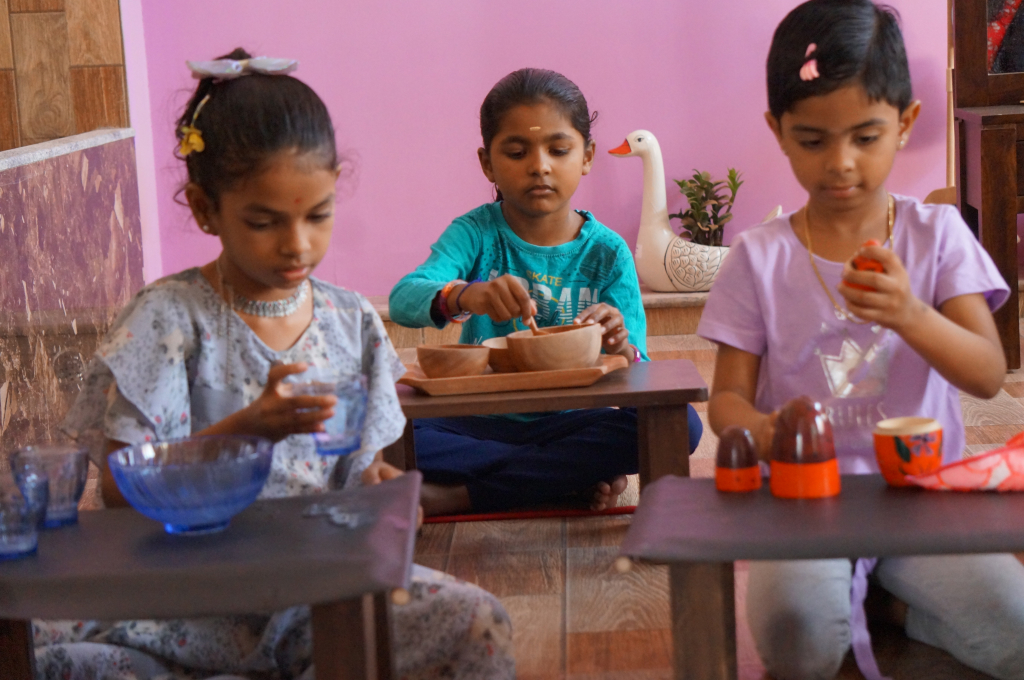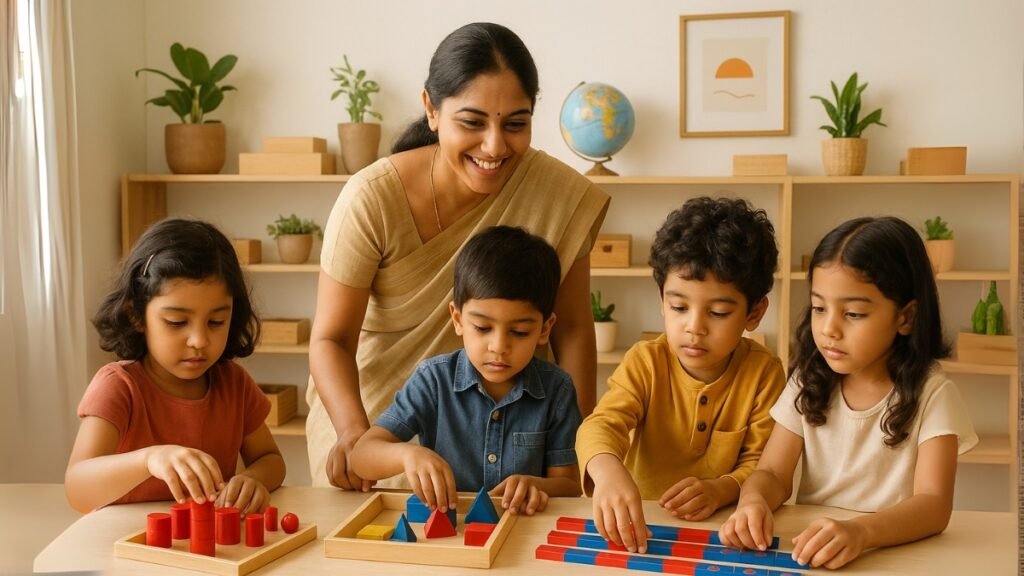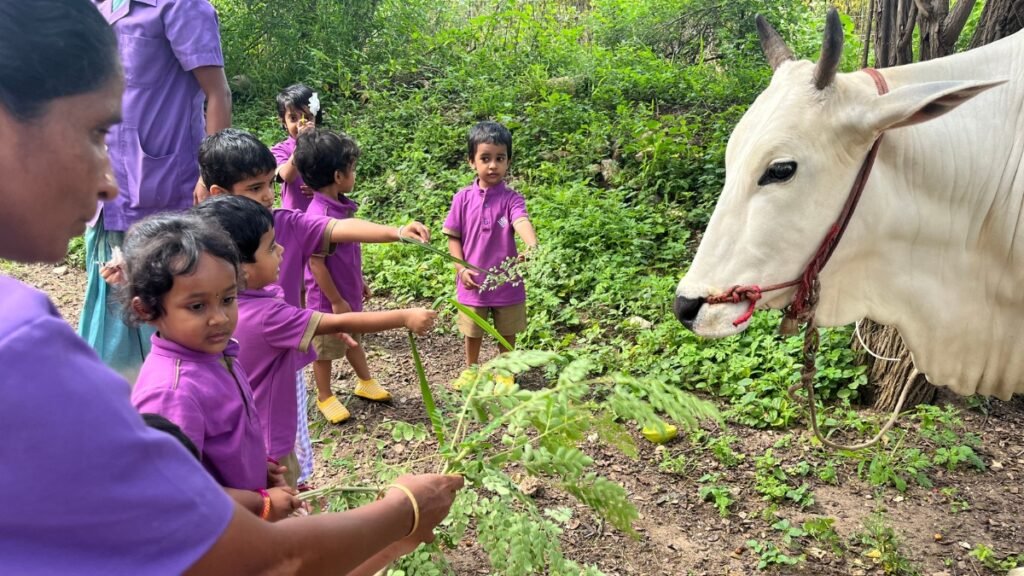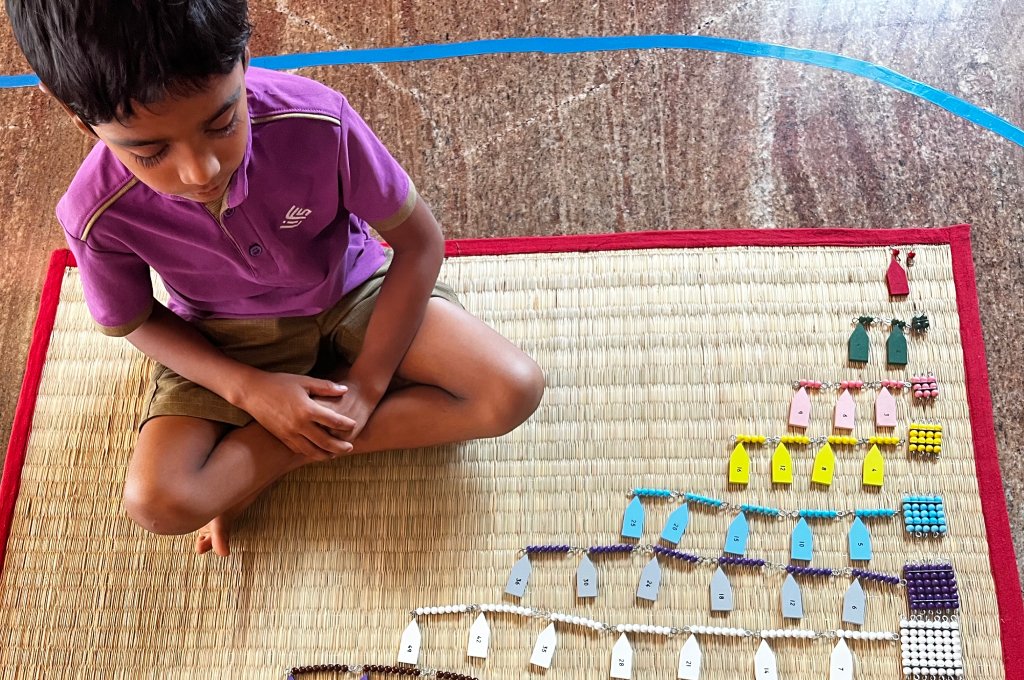Foundation and Philosophy:
– Montessori: Founded by Dr. Maria Montessori, this method is based on the belief that children have a natural desire to learn and should be given the freedom to explore their interests. The focus is on holistic development, encouraging independence, and fostering a love for learning. Many parents in Coimbatore seek Montessori schools in Coimbatore for their children due to this child-centered approach.
– CBSE: CBSE, an Indian national educational board, emphasizes a structured curriculum and standardized examinations. It seeks to provide a robust and vibrant academic foundation that prepares students for higher studies and competitive exams. Many of the best schools in Coimbatore follow the CBSE curriculum, ensuring a wide range of academic opportunities.
Learning Environment:
– Montessori: Classrooms are child-centric, with materials designed for hands-on exploration. The environment encourages self-paced and self-directed learning, with teachers acting as facilitators. Best preschools in Coimbatore often adopt this method, as it focuses on early childhood development and creative learning.
– CBSE: Classrooms follow a more traditional setup, with a teacher-led approach. The curriculum is structured, and there’s a clear sequence of topics to be covered each academic year. The top 10 schools in Coimbatore frequently adopt CBSE as their framework to cater to a broad range of educational needs and objectives.
Age Grouping:
– Montessori: Typically features mixed-age groupings, often spanning three years. This promotes peer mentoring and collaborative learning. Many Montessori schools in Coimbatore utilize this model, fostering cooperation and shared learning experiences among children.
– CBSE: Students are grouped by age, with each grade level corresponding to a specific year. The traditional approach found in Waldorf schools in Coimbatore also promotes age-specific groups but with an emphasis on creative learning in alignment with child development stages.
Assessment:
– Montessori: Emphasizes continuous, formative assessment. Teachers observe students’ interactions with materials, their peers, and the environment to gauge progress. Standardized testing is minimal or non-existent. This holistic approach is often preferred by parents seeking alternatives to traditional schooling systems.
– CBSE: Relies heavily on periodic examinations and standardized tests. Performance is evaluated through written exams, projects, and assignments. Many of the best schools in Coimbatore that follow the CBSE curriculum focus on preparing students for competitive exams, which are central to the education system.
Duration and Scope:
– Montessori: Primarily focuses on early childhood education, although some Montessori schools in Coimbatore may offer elementary and even middle school programs. The curriculum is especially beneficial for younger children, focusing on their growth in the early formative years.
– CBSE: Covers the entire K-12 spectrum, from primary to senior secondary levels. The top 10 schools in Coimbatore that follow the CBSE curriculum offer a full range of subjects and educational opportunities, ensuring that students are prepared for the future academically and professionally.
Curriculum Content:
– Montessori: The curriculum is flexible and adapted based on the child’s interests. It includes practical life skills, sensorial activities, language, mathematics, cultural studies, and more. This flexible, student-driven learning environment is a key reason why Montessori schools in Coimbatore are popular choices for parents looking for a non-traditional approach.
– CBSE: Offers a fixed curriculum that covers subjects like Mathematics, Science, Social Science, Languages, and others. The content is structured and follows the National Curriculum Framework. Waldorf schools in Coimbatore also provide a creative, child-focused curriculum that aims to develop well-rounded individuals, albeit with a different focus than CBSE.
Conclusion:
While the Montessori approach emphasizes individualized, exploratory learning, CBSE provides a structured educational path with clear milestones. The best choice depends on the child’s learning style, family values, and long-term educational goals. Parents seeking a holistic, hands-on education for their toddlers may opt for Montessori schools in Coimbatore, while those looking for a more traditional, academic foundation may prefer the top 10 schools in Coimbatore offering CBSE.
Each system has its strengths, and exploring the options at local schools such as the best preschool in Coimbatore or even considering Waldorf schools in Coimbatore could provide further insights to help make an informed decision for your child’s future.
